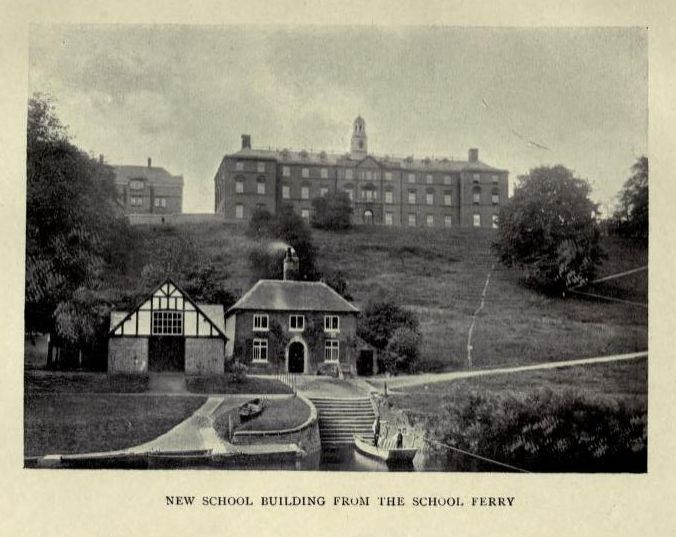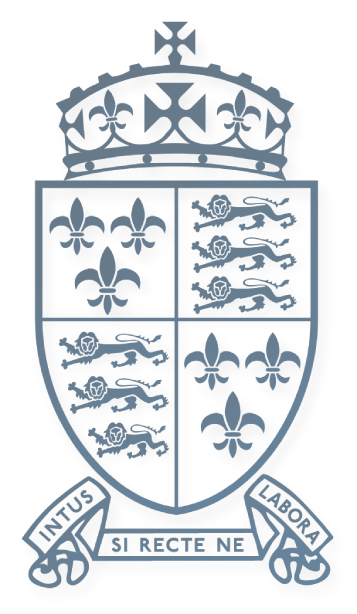
1878 – Headmaster Moss and the Decision to Move Shrewsbury School

“I venture to submit to your consideration the advisability of purchasing a new and larger site on the outskirts of the town…”
Revd Henry Whitehead Moss dropped a bombshell among the Trustees of Shrewsbury School when, answering from St John’s College Cambridge on 3rd July 1866 their congratulations on his appointment as Headmaster, when he wrote the above.
Years later, Moss wrote:
“No one had thought before of a change of site, and I fear the suggestion was a shock to the Trustees…. It was imperatively necessary for me to move at one, if the expediency of the removal of the School to another site was ever to receive consideration. Otherwise I should not have ventured to suggest anything so novel and revolutionary – I, a young man, only just 25 – to a body of middle-aged or old men, whose acquaintance with the circumstances and needs of the School was far longer and incomparably greater than my own.”
Nevertheless, as a former pupil of the School, Moss would have been acutely aware of “the very bad condition of the buildings” (as noted in the Clarendon Commission Report of 1864), and he had the foresight to realise that even if they were improved and rebuilt, as the Trustees were planning, the cramped position of the School Site in the town centre would prevent any possibility of future expansion. The time would quickly come when Shrewsbury would no longer be able to compete not only with the other schools of long and distinguished history, but with other newer schools that were beginning to spring up all over the country.
Time was of the essence for Moss, as the Public Schools Bill following the Clarendon Commission’s Report was currently before Parliament. Once it was passed, no removal of the School to another site would be possible without the passing of another Act of Parliament. Moss acted swiftly and decisively and managed to secure the insertion of a clause in the Public Schools Act of 1868, which allowed the School to be moved to a site “not exceeding Three Miles measured in a straight Line from the Market Place in Shrewsbury”.
It was not until 1872, however, that the newly constituted Governing Body gave the matter of relocation serious consideration, following threats from Moss to admit no more pupils, owing to the severe lack of accommodation on the current Site.
Five different sites were considered at one time or another, in addition to investigating the possibility of acquiring more property on Castle Street and even part of the Castle and Council House properties, so that the existing Site could be expanded. The ‘Belle Vue Site’ at Coleham was the one originally suggested by the Headmaster, which was to be approached by a new bridge across the river. Other possibilities included a site off Abbey Foregate incorporating Whitehall (the original first choice of the Governors’); a site at Coton Hill (which ultimately became the Governors’ preferred option); two sites on the Westbury Road; and Kingsland.
The very thought of relocating the School caused uproar among the local townspeople, however, as well as among vast numbers of Old Salopians. They expressed their objections loudly, publicly and, in some cases, extremely virulently. Letters were published in the press, pamphlets were written, several protest meetings were held in Shrewsbury and in London by both Old Salopians and townspeople, and a large book containing the signatures of over 800 people of prominence in the town was presented to the Governors. Local people were concerned that the School would end up being too far away for day boys and that valuable local trade would be lost.
Nevertheless, in December 1874 the Governing Body formally agreed “that Shrewsbury School should be removed from its present site”. But they also agreed that, in view of the fact that their choice of Coton Hill met with such strong local opposition (including concerns that site was prone to being cut off by floods and would therefore be inaccessible to the day boys), they should instead set their sights on moving the School across the River Severn to Kingsland.

Photo: the Kingsland Site before the move
Kingsland had had a varied history. In the 16th century it had been a place where criminals were hanged, and in the 17th century a pest house stood on it. In the 18th century it was sometimes used for horse racing, but during this period much of it was enclosed and cultivated. Other parts were used for military encampments. But the Shrewsbury townspeople knew it best as the scene, from 1591 onwards, of the Shrewsbury Show where eight of the guilds had their arbours, small buildings within enclosures, used at other times as cottages, which were scattered on and outside what are now the School grounds. The Show had for a long time degenerated into rather a rowdy and disreputable affair, however, so the Governors had little difficulty persuading the town authorities to obtain a Home Office Order in 1878 for its abolition.
The Main School Building
No substantial building existed on Kingsland until after the Corporation granted a 99-year lease, in 1758, to the London Foundling Hospital, whose Governors had decided to establish branch hospitals in the country. The architect was T.F. Pritchard (designer of the Iron Bridge) and the cost was £12,000 (£2.2m at today’s prices) with a further £5,000 spent on fitting it up. The decorations of the Council Room were described as “ridiculously expensive”, and the elaborate carved mantelpieces were later transferred to School House.
The building was used as a hospital from 1763 to 1772 but was then vacant for two years, until it was temporarily used to house families who had lost their homes when fire destroyed 50 houses in the Abbey Foregate. After that it was used in part as a woollen factory, with other parts being let as summer residences for people in the town. In 1781, the Government requisitioned it for Dutch sailors captured in the American War of Independence, and 600 hammocks were hung for them in its rooms. It then reverted in part to a woollen factory.
In 1784, the building was bought with 20 acres of land by a union of five local parishes as a House of Industry, or workhouse). Ultimately the building proved to be too large for the numbers of people needing to be accommodated, so in 1871 the House of Industry was closed and the residents were moved to the Atcham workhouse at Cross Houses.
As the building was therefore standing empty and was well within the required limit of 3 miles from the Market Place (although a new bridge across the river would be needed), the Corporation dropped their previous objections and agreed to sell the old House of Industry and 27 adjoining acres of land to the School Governors for £9,500 (the equivalent of roughly £1.2 million today).

Photo: New School Building from the Ferry

